Clinical studies of sexual perversion, such as von Krafft-Ebing’s Psychopathia Sexualis (Leipzig, 1901) and Stekel’s Sexual Aberrations (Vienna, 1922), were printed by scientific publishing houses and produced principally for therapists and legal scholars in Central Europe. The numerous copies in multiple editions of these collections, however, revealed an unintended secondary readership: other perverts. The salacious case histories of sadists, fetishists, Algolagnists, flagellants, and the like, formed a novel province in Weimar pornography.
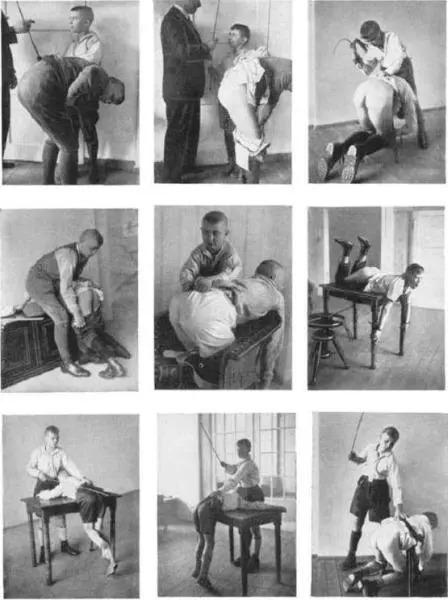
From a series of 350 photographs, Learning the Rules
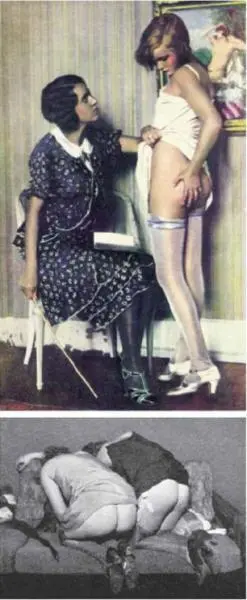
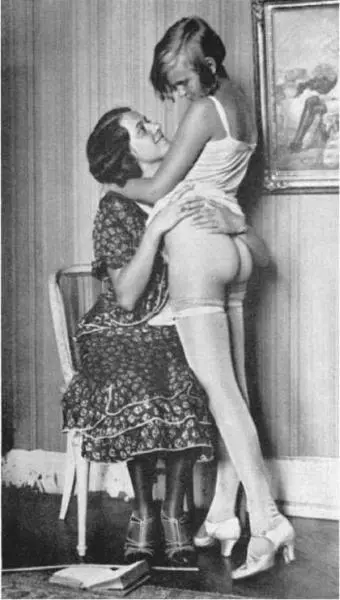
Maurice Carriere, Appreciating the Need for Discipline
Under the guise of psychological research, graphic photographs and illustrations were added to still other strange biographical confessions and fantasies. Berliners seeking stronger erotic sensations and instruction for weird sex scenarios merely had to peruse Galante journals for the current “scientific” offerings. Virtually every deviant practice had a layman’s society and private publishing arm.
The Headless Man
Last night I had a frightening dream. Standing by my bed was a headless man wearing a tuxedo. I jumped up and wanted to run but my feet were frozen to the floor.
The half man opened a suitcase, which was filled with detached heads.
“Here are the faces of the men who once loved you but you decapitated them with your cold heart,” said the ghoulish voice. “Now match the correct face to my body.” He emptied the suitcase and the heads rolled over my breasts. I awoke with a scream and hastened to my studio to illustrate my horrid history.
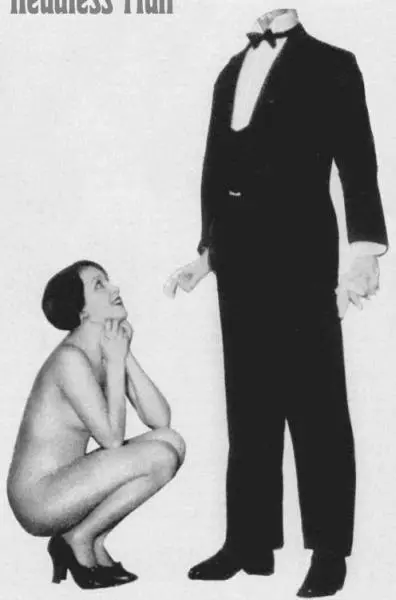
Manassé, Das Magazin , August 1932
Seven heads she selected… But each one disconnected.
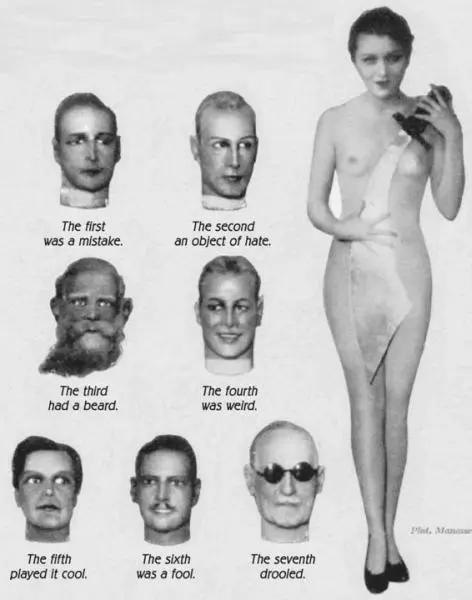
“Miss Bluebeard and Her Victims”
Every man she rejected. Each technique was unperfected.
One “physician,” Ernst Schertel, headed a hypnoerotic “Dream Theater” and several book clubs devoted to whipping and buttocks fetishism. Schertel’s serialized periodicals explored the dark fantasy games and dramatics of animal lovers, worshippers of obese Dominas, sadistic teachers, bare-hand flagellants, incestuous necklace fetishists, urine drinkers, bondage freaks, high-heel stompers, and shit-sniffers. German authorities attempted to shut down his Parthenon-Verlag in 1931 and Wilhelm Reich publically opposed the perverse Dream Theater. But Schertel, working under foreign pseudonyms like Dr. F. Grandpierre, outwitted them all. His lavish works and those of his associates continued to be distributed into the early Nazi period.■
Of all the rites and ceremonies as practiced today by the secret love cults of the world, the most dreadful and least known is the Black Mass. […] The Devil-Worshippers’ infernal “underground” is comprised of people of otherwise superior intelligence. Its international center is in Germany, in the city of Berlin.
Marian Dockerill,
My Life in a Love Cult , 1928
Contemporary religion can never ignore the embers of desire and sexual longing. Burning belief is always based on burning sex.
Ernst Bergmann,
The German National Church , 1933
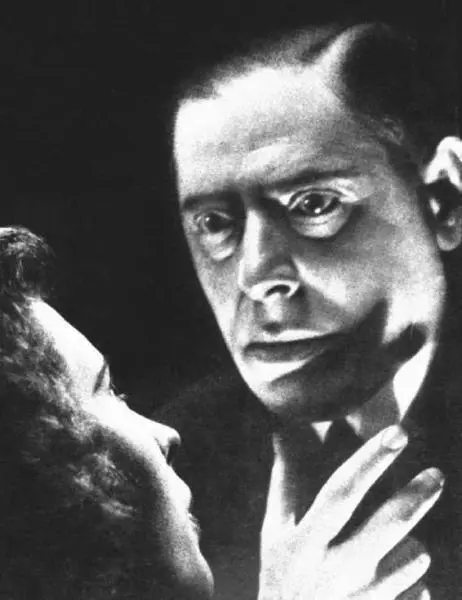
Erik Jan Hanussen at his Palace of the Occult, 1933
For many Berliners, sexual gratification was not primarily the end-game of courtship, a simple pleasurable pursuit, a nocturnal amusement, mammalian bond, or a natural expression of self. It was a sacred rite or miraculous proof of some paranormal lattice where supernatural fate and deviant desires had become intertwined. In Weimar Germany, sex—in all its untraditional, transgressive, and anti-familial manifestations—had become a religion as well as a pastime.
The antinomian groundswell that propelled nearly one quarter of Berlin’s liberated denizens into the elegant vistas of erotic degeneracy dragged others into the dank chambers and communal embankments of sex-mad gurus and cultish mystery-sects. These homegrown creeds frequently mixed occult teaching with induced lust or carnal mayhem. Male/female intercourse was not just the very source of life—and therefore a shadow of God’s creative function—it was also a supreme delight, and, when controlled, a heightened form of prayer. Copulation and ejaculatory release for German devotees of Sex Magic had attained extraordinary and novel meanings; they were bodily manifestations of lost esoteric wisdom, techniques of Gnostic faith, flipped transmogrifications of flesh, even divine rungs for ultimate human salvation.
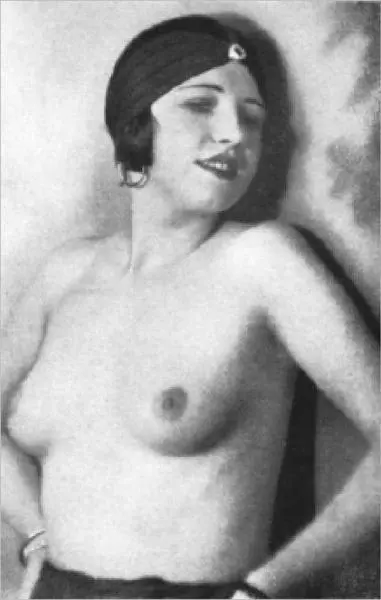
Cult Dancer in Berlin, 1926

The Clairvoyant , an adult dice game, where players learn their true sexual characters and erotic fortunes, 1926
In his bestselling anthology about the contemporary occult in the German-speaking world, The Miraculous, or The Bewitched (Berlin: Rowohlt Verlag, 1932), Rudolf Olden compared magical belief systems to compulsions of physical attraction (“sex appeal”) and unwavering love. Each of them had an irrational basis and was a publicly sanctioned sublimation of innate creative or sexual energies.
Outsider German political movements and religious cults tapped into the transcendent urge for ecstatic immediacy on a collective level. Hitler, for Olden, was no less a tantric god than Louis Haeusser, Otoman Hanish, Maria Raschig, Joseph Weissenberg, or dozens of other occult Führers with mass followings. Sexuality was the fuse and hidden spring of Weimar Germany’s newest dogmas.
Revolutionary discoveries in behavioral science and technology in the last quarter of the nineteenth century, ironically, stimulated belief in “unseen forces” and their superhuman mastery. The empirical findings in brain chemistry, atomic physics, constitutional psychology, and, especially, wireless communication seemed to suggest—in the popular German imagination—that they were indeed invisible, virtually mystic, fields surrounding each individual body that, in turn, was dictated by solar or astral waves. International luminaries like Thomas Edison, Sigmund Freud, Carl Jung, Guglielmo Marconi, Marie Curie, Nikola Tesla, and Albert Einstein were heroes to both the scientific and psychic communities. Their baffling theories, Berlin parapsychologists claimed, were foretold by the nineteenth-century American Spiritualists and the Anglo-Indian Theosophists.
Читать дальше




















